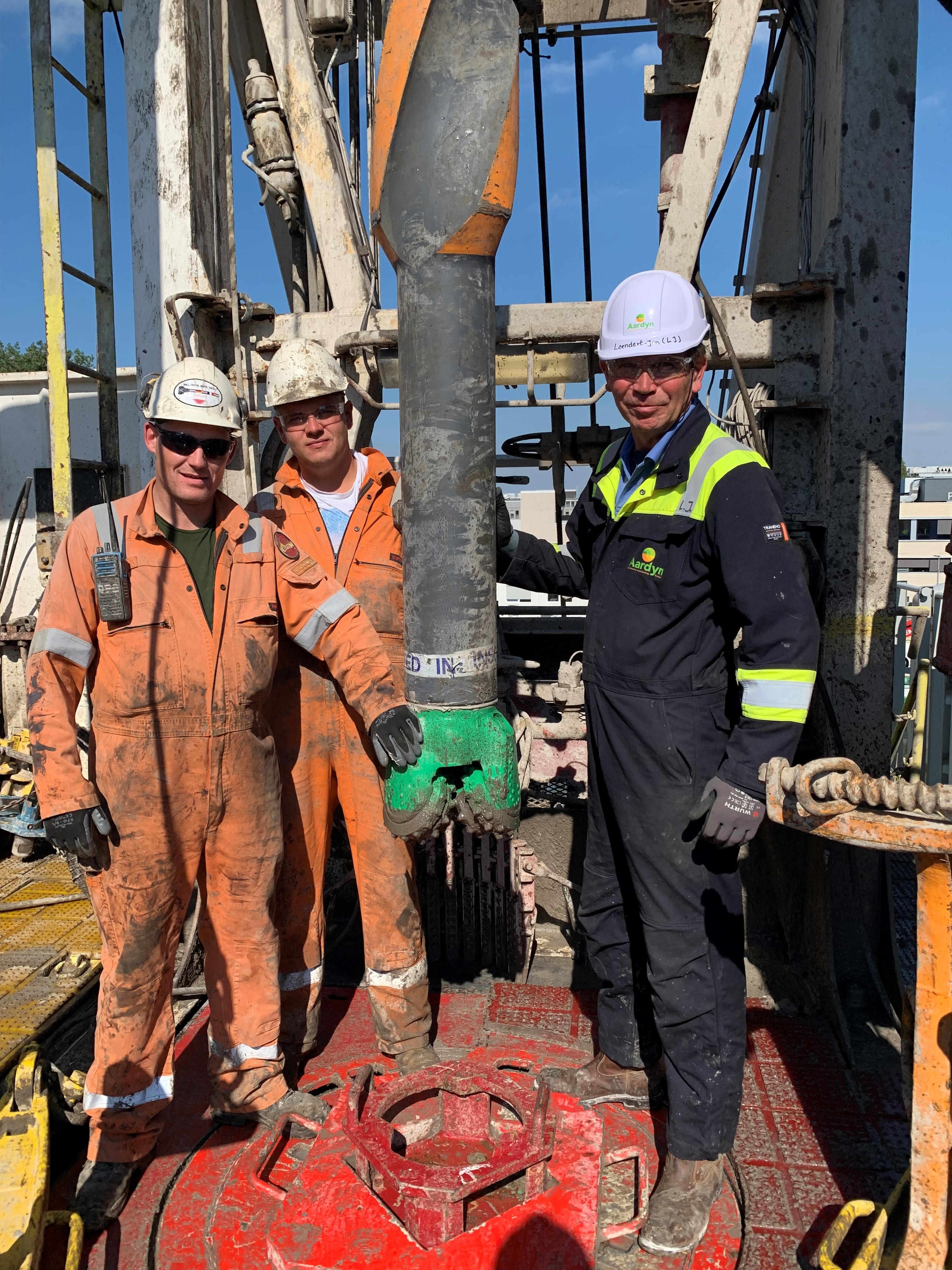The drilling process at the Geothermal Delft location is currently in full swing. Last week we spoke with Leendert-Jan Ursem, Drilling Manager at Aardyn. He used to be a student of Mining Engineering at TU Delft, but now he is on the campus in Delft every day to realize the geothermal well. During our conversation he told us more about the drilling process, research, safety and his personal vision for the future.
What happens during the drilling process?
“During the drilling process we go deep into the ground, up to almost 3000 meters below the surface. We drill at an angle of 45 degrees, resulting in a vertical depth of 2100 meters. A motor with a kink steers the chisel underground in the desired direction. Two wells are drilled, in one well the hot water is brought up (production well) and through the other well the cooled water is pumped back into the same reservoir (injection well). At the surface, the two wells are about 7 meters apart, but they are 1500 meters apart at reservoir depth. The two wells are drilled with an (industrial) diamond drill bit, which does not wear out during drilling in hard rock. “
“We stop drilling until we reach the earth layer where the hot water is located. The production well and the injection well are placed here. We install a special filter tube in the production well. The filter that is installed allows the water to pass through, but leaves any unstable sand in the reservoir. This keeps the water and the well clean. The injection well is used to return cooled geothermal water to the reservoir. In this injection well we make perforations in the pipe with explosives, so that the water can be injected back into the reservoir. This way we can use the geothermal energy efficiently.”
How long does the drilling take?
“Drilling the two wells will take about 110 days, which is equivalent to about 4 months from July 1. During this time we move the derrick 2 times, first from the injection to the production well and then back again. This way we drill different sections as a "batch", which means we can reuse the same materials for each section.”
What kind of research is done during the drilling?
“During drilling, we collect all the drilling dust (soil material that is drilled away) with vibrating sieves and we examine the different layers in the ground. We also lower electronic borehole measuring equipment into the well so that we can record various data from the strata. When the borehole casing is placed, we attach a fiber optic cable to the outside and inside. A borehole casing is a pipe that is placed in the borehole during the drilling process. It serves as a protective lining for the borehole and helps prevent damage to the borehole walls. After placing the casing, cement is pumped on the outside, so that the hole can no longer collapse and later the salt water can no longer flow to the earth layers. In addition, it prevents different layers in the substrate from mixing with each other. We measure temperature, pressure, strain and acoustic signals with the fiber optic cable that is installed. This also helps us collect important data while drilling.”
What does the drilling team look like?
“The drilling process starts with the design of the well, where the drilling engineer calculates all the pipes and cementations to handle the high pressures at great depths. Then the 'drilling supervisor' and the 'drilling master' come into action to carry out everything on location. The materials and logistics coordinator ensures that all trucks arrive on time with the materials at the drilling location. The drill master has a team of drilling aids (roughnecks) who screw the drill pipes together and run the fluid pumps. Safety comes first, and everyone is responsible for preventing accidents, both for themselves and others.”
“As a drilling manager, I am responsible for the entire picture. My job is to make sure everything runs safely, technically correct, on schedule and within budget.”
How do the monitoring systems work during drilling?
“During the drilling, we closely monitor all sounds using special microphones that measure the sound pressure per minute. This sound is integrated into a night and day volume that must be below the strict legal standard. Soil vibrations are also measured, whereby a large truck already causes an enormous disturbance in the measured values. Here too, it is ensured that we always stay within the permitted standards.”
What do you like so much about your profession?
“I have been in the drilling business for over 30 years and exclusively in the sustainable geothermal industry for the last 3 years. It's great to constantly come up with new smart systems to putt
